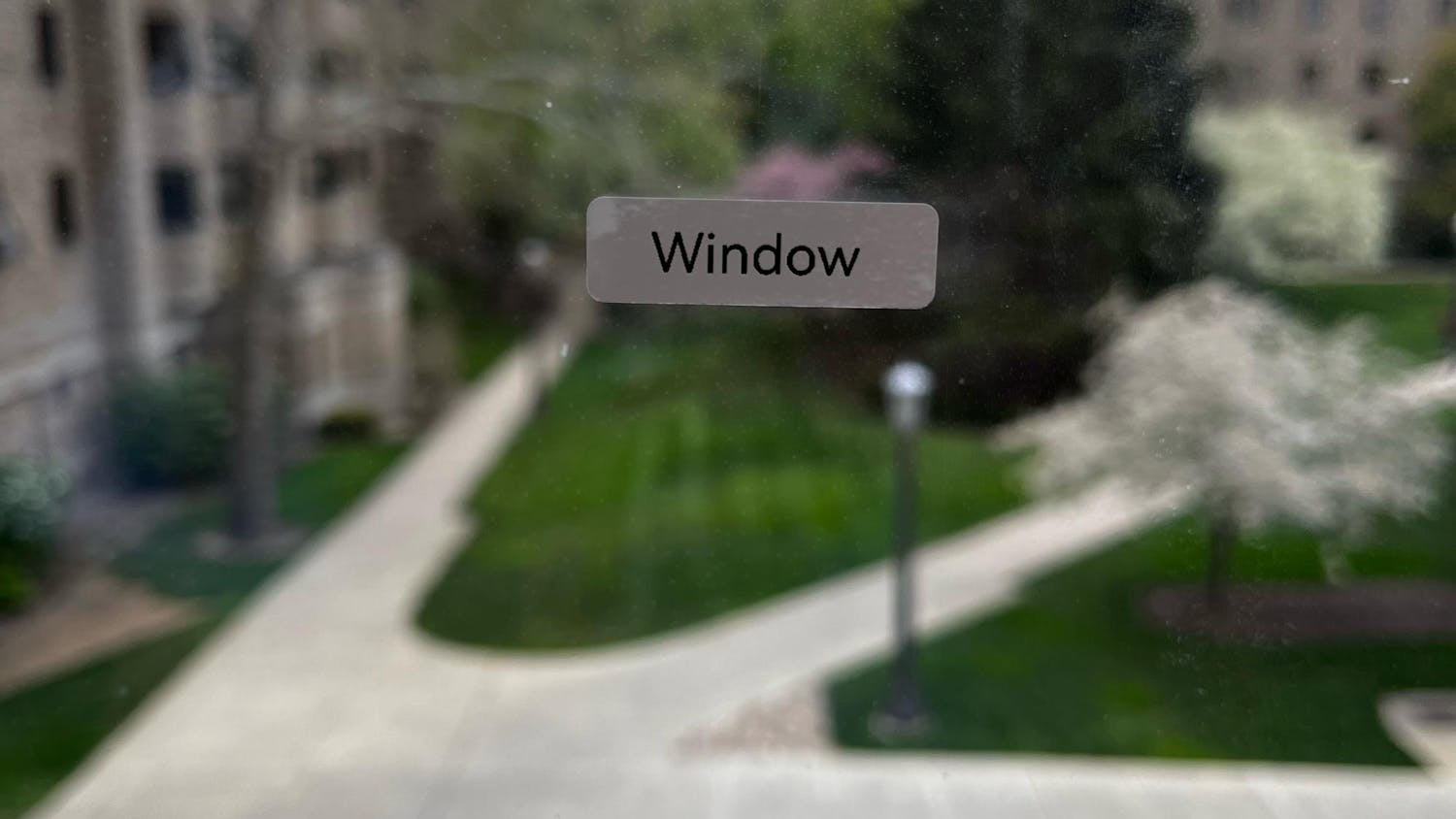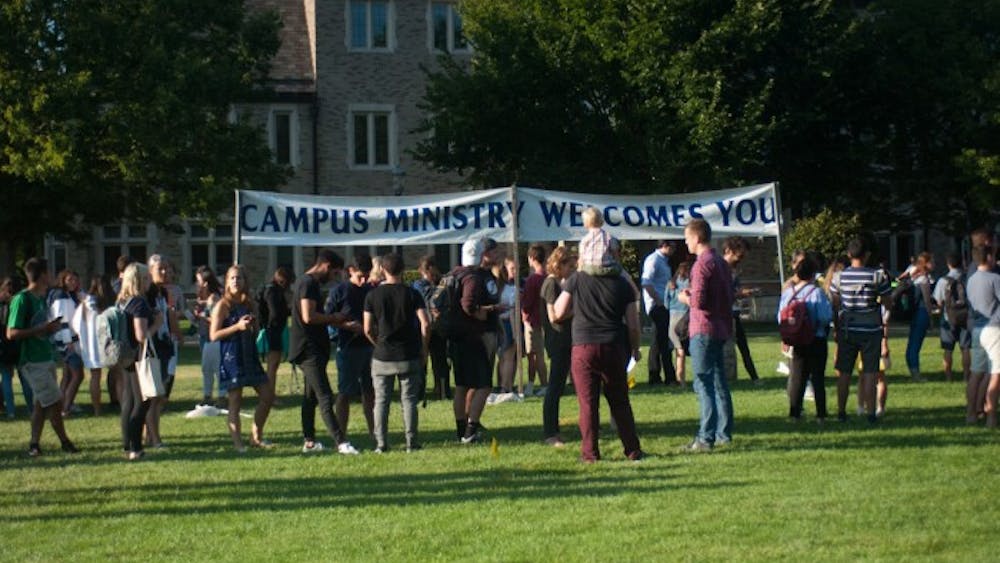To be completely honest, I was among the worst of them.
I held my tongue in cabs, but as soon as I was outside their hearing, that filter disappeared and I would complain about how South Bend is lame. It's almost a solidarity thing: people connect through complaining about the city much as they would connect by talking about the weather. I'm from a big city, and while Notre Dame's great opportunities pulled me to this part of the United States, I still desperately craved the creative pulse, that almost tangible hum of energy, that a large city provides.

Things hit a low point one dreary January day my freshman year, when, trudging into O'Shaughnessey and rubbing my numb hands together, defrosting for a moment before taking a seat, I spied a copy of Newsweek on a magazine rack boasting the headline "America's Dying Cities." Mildly interested, I opened the magazine. Out of ten cities, South Bend was number eight.
And yes, that's bad. South Bend's population has been in slight decline, and 26 percent of the remaining population does live at or beneath the federal poverty line, according to the U.S. Census Bureau. The first video that shows up if you search "South Bend, IN" on YouTube is a terrible rap about the gangster culture of the city - peppered with shots of Notre Dame football and drawled over an annoyingly catchy riff from our fight song.
"There's a silver lining!" a cold, cynical observer could announce. "We don't need to travel to all the way to Uganda or Ecuador to study and fight poverty!" While it really is true that a student body that professes to care about social justice can benefit in a very practical way from our proximity to South Bend, there are merits and detriments to both local and global service work, so I won't push that angle too far.
I also didn't write this article to objectify South Bend bluntly as a bootcamp for people interested in putting social justice work into practice. I wrote it because, when I was a sophomore, South Bend Mayor Pete Buttigieg ("Buddah-judge") came to speak at Notre Dame, and he not only inspired me to study political science and intern for him, but also initiated the start of a 180-degree change in my attitude about South Bend. I started going downtown as a junior, first for the internship, but then just for fun.
The first thing I learned is that there is a free bus that leaves Library Circle every half hour and shoots you downtown in 15 minutes. South Bend, with a population of about 100,000, is big enough to be the fourth-largest city in Indiana, but it's also small enough that other passengers on the bus almost always strike up a conversation with you. My eyes-down, elbows-in cosmopolitan commuter self finds that charming.
I got off each day at Main Street and Washington, which placed me a few minutes from the gorgeous St. Joe River, the cozy Main Street Coffee House (which has the best parfaits you will ever try), the convincingly New Orleans-themed Chicory Café and the occasional night of live music at Fiddler's Hearth (21+ to drink but all ages can go).
After two years of disappointment in the city surrounding Notre Dame, my perspective began to shift.
Fact: South Bend and Notre Dame were born within 25 years of each other in the first half of the 1800s, and have existed, side-by-side but in rather separate worlds, ever since. This is changing. Notre Dame and South Bend have increasingly called for mutual engagement. So we have a great Center for Social Concerns. But service is just one kind of engagement. But another thing that South Bend might like is not our pity, but rather our affection.

There are more cool things going on in South Bend than you will ever have time to take advantage of, but I challenge you to try. There's a blog called 365southbend.blogspot.com with a phenomenal list of things to do in the city, and a more current calendar can be found on downtownsouthbend.com.
You want to revitalize South Bend? Hang out downtown! There are actually 32,000 college students who come to South Bend every year - imagine how much income that could bring South Bend businesses. But this involves a change in conversation.
Rather than forging solidarity by complaining about South Bend, strengthen friendships by biking down the East Race river trail or by attending a concert in the space that used to be the swimming pool of Central High. (Check out the website of local artist Peter Hochstedler for a taste of the great music around here.) And here's a tip: dates at CaféNavarre trump dining hall dates to the nth degree.
Internships are another kind of engagement. South Bend, as a site of a massive urban renaissance that is re-molding its identity to a center of culture and of technological innovation, is a fascinating city to learn about from any sort of developmental perspective. But right now, from a student's-eye perspective, when we are encouraged to engage with South Bend, it is either through insults or through service.
Students of the University of Notre Dame, I have two challenges for you. The first is really easy: The next time that you get into a cab, please be mindful of the fact that if you don't like what you see, it's the driver's home you are talking about. The second: Stop objectifying that home. Take that cab downtown - or ditch the cab and take the free bus - strictly for fun. Go explore what's just around the river bend. South Bend, that is. You may like what you find.
Special thanks to Mayor Pete, Abby Davis, Jake Grefenstette, KwameNuako, Therese Germain, Elizabeth Anthony, and everyone who has shown me South Bend for their ideas, insights and inspiration.
Nora Goebelbecker is a senior political science major also participating in the Hesburgh Program for Public Service. She can be
contacted at ngoebelb@nd.edu
The views expressed in this column are those of the author and not necessarily those of The Observer.












